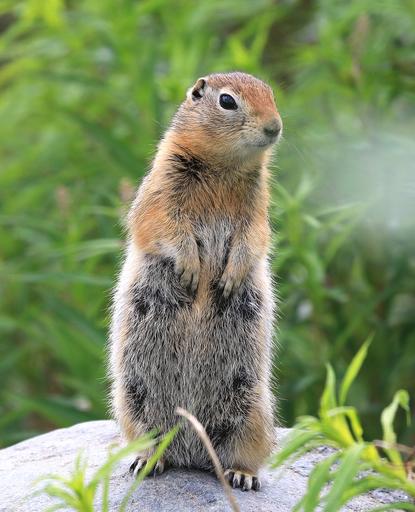MAKE A MEME
View Large Image

| View Original: | SQUIRREL,_ARCTIC_GROUND_(Spermophilus_parryii)_(6-25-2016)_thirteen-mile_hill,_13_miles_west_of_paxson,_ak.jpg (2790x3438) | |||
| Download: | Original | Medium | Small | Thumb |
| Courtesy of: | www.flickr.com | More Like This | ||
| Keywords: animal outdoor marmot mammal "People in Alaska, particularly around the Aleutians, refer to them as "Parka" (pronounced "par'kee") squirrels, most likely because their pelt is good for the ruff on parkas and for clothing... It is one of the few Arctic animals, along with their close relatives the marmots ... and the un-related little brown bat that hibernate. In the summer it forages for tundra plants, seeds, and fruit to increase body fat for its winter hibernation. By late summer the male Arctic ground squirrel begins to store food in its burrow so that in the spring it will have edible food until the new vegetation has grown. The burrows are lined with lichens, leaves, and muskox hair. During hibernation, its brain temperature drops to just above freezing, its core body temperature reaches temperatures down to -2.9 °C and its heart rate drops to ~1BPM. Peripheral, colonic, and blood temperatures become subzero." (from Wikipedia) "People in Alaska, particularly around the Aleutians, refer to them as "Parka" (pronounced "par'kee") squirrels, most likely because their pelt is good for the ruff on parkas and for clothing... It is one of the few Arctic animals, along with their close relatives the marmots ... and the un-related little brown bat that hibernate. In the summer it forages for tundra plants, seeds, and fruit to increase body fat for its winter hibernation. By late summer the male Arctic ground squirrel begins to store food in its burrow so that in the spring it will have edible food until the new vegetation has grown. The burrows are lined with lichens, leaves, and muskox hair. During hibernation, its brain temperature drops to just above freezing, its core body temperature reaches temperatures down to -2.9 °C and its heart rate drops to ~1BPM. Peripheral, colonic, and blood temperatures become subzero." (from Wikipedia) | ||||